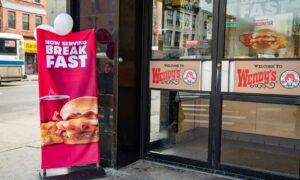A key Federal Reserve inflation measure rose as expected in January, signaling that monetary authorities could witness stalled progress in their inflation fight.
The PCE slowed to an annualized rate of 2.4 percent last month, down from 2.6 percent in December and matched economists’ expectations.
Core PCE, which excludes the volatile energy and food components, dipped from 2.9 percent to 2.8 percent year-over-year. This represented the lowest core PCE inflation reading since April 2021.
On a month-over-month basis, core PCE jumped 0.4 percent, up from 0.2 percent.
Moreover, the supercore PCE excluding housing was higher month-over-month and inched higher to 3.5 percent due to increases in health care and transportation services.
BEA data revealed that prices for services rose 0.6 percent while prices for goods dropped 0.2 percent to kick off 2024. Additionally, food prices surged 0.5 percent, and energy costs fell 1.4 percent.
In other federal agency statistics, personal income soared 1 percent last month, up from 0.3 percent in December and much higher than the market forecast of 0.4 percent.
The substantial boost “primarily reflected increases in government social benefits, personal income receipts on assets, and compensation,” the BEA noted.
Personal spending came in as expected, rising 0.2 percent last month, down from 0.7 percent in December. The lackluster boost to spending was fueled by a significant decline in automobile sales. The largest contributors to the spending gains were housing and utilities, financial services and insurance, and health care.
The personal savings rate as a percentage of disposable income clocked in at 3.8 percent.
The Fed considers the PCE more accurate to gauge inflation than the consumer price index (CPI) because it measures how much money households spend on everyday purchases, updates item weights quarterly, and includes expenditures made by urban and rural consumers. The CPI assesses the average price of goods and services, looks at urban expenditures, and updates weights biannually.
Market Reaction
U.S. stocks were relatively unchanged in pre-market trading following the latest inflation data as the leading benchmark indexes teetered between positive and negative territory before the opening bell.
The U.S. Dollar Index (DXY), a gauge of the greenback against a basket of currencies, erased its gains and further weakened below 104.00.
Paul Volcker Fears
Looking ahead to the next inflation readings, the Cleveland Fed Bank’s Inflation Nowcasting model estimates the annual CPI and PCE readings will come in at 3.1 percent and 2.3 percent, respectively.
While many market analysts think it is almost certain that the central bank will achieve its 2 percent target, some economists question if it will be sustainable.
Connor Lokar, an economist at ITR Economics, told The Epoch Times that it will not be as easy as the financial markets think.
In the “good old days” before the COVID-19 pandemic, the Fed was frustrated that it struggled to keep the annual inflation growth rate at 2 percent. Moving forward, “we think the new days are going to be something like trying to bring it down to 2 percent on any sort of sustained basis,” Mr. Lokar said.
“We might run into some CPI numbers that aren’t quite as cooperative as either the Street or [Fed Chair] Jerome Powell would prefer to see as we move through this year,” he added.
By 2025, inflation could return to 4 percent or 5 percent, Mr. Lokar noted.
Would this be similar to what happened in the 1980s?
Some Fed officials have expressed concern about reliving that decade when inflation kept returning, forcing the U.S. central bank to pivot back and forth.
Richmond Fed President Tom Barkin recently discussed “the many stories of inflation head-fakes,” alluding to the days of former Fed Chair Paul Volcker.
Because the U.S. economy remains on solid ground and inflation remains above trend, monetary policymakers are urging patience before pulling the trigger on the first rate cut. This has forced investors to adjust their expectations on interest rates.
The next two-day rate-setting Committee meeting is scheduled for March 19 and 20.
Original News Source Link – Epoch Times
Running For Office? Conservative Campaign Consulting – Election Day Strategies!


